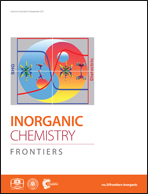Facile preparation of nitrogen-doped graphene as an efficient oxygen reduction electrocatalyst†
Abstract
The development of highly efficient and low cost electrocatalysts for the oxygen reduction reaction (ORR) is crucial for metal–air batteries and fuel cells. Herein, an acid-assisted approach has been developed to prepare nitrogen-doped graphene electrocatalysts via the co-precipitation of graphene oxide (GO) and melamine in the presence of various inorganic acids (e.g., HNO3, H2SO4, and H3PO4), and a subsequent pyrolysis process. When used as an electrocatalyst, the nitrogen doped graphene prepared in the presence of nitric acid exhibited the best catalytic activity towards the ORR by a four-electron pathway with the largest current density (∼5.5 mA cm−2) and the highest onset potential (∼0.90 V vs. RHE) in comparison with the samples prepared in the presence of sulfuric acid and phosphate acid. Being a corrosive and oxidizing acid, nitric acid is likely to promote the formation of surface defects and pyridinic nitrogen under the thermal treatment, thus improving the electrocatalytic activity. More importantly, Zn–air batteries were fabricated by using the as-prepared electrocatalysts in the air electrode, exhibiting high power density and good long-term stability. This facile acid-assisted approach provides a new strategy to synthesize low-cost yet highly efficient heteroatom doped carbon electrocatalysts for the ORR.



 Please wait while we load your content...
Please wait while we load your content...